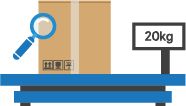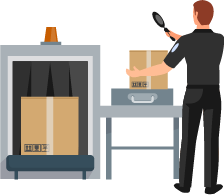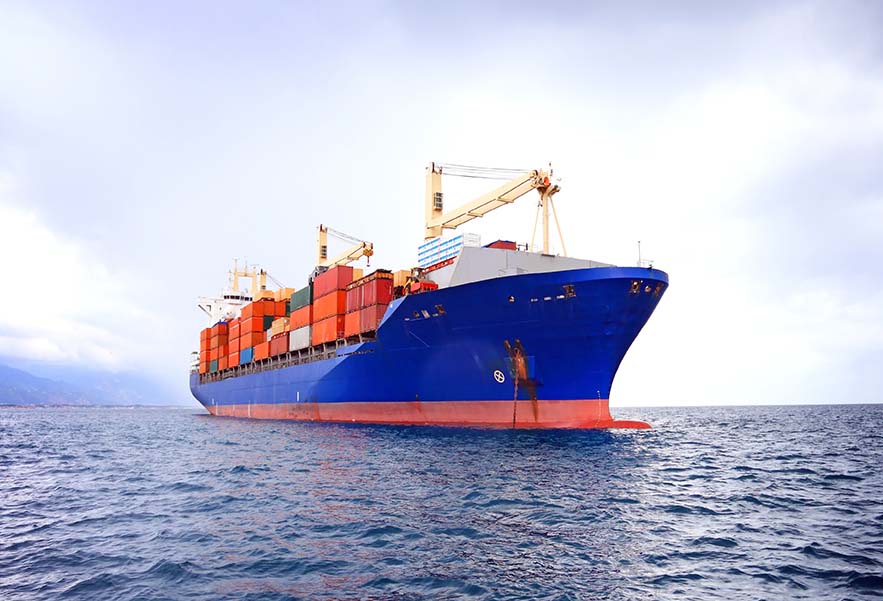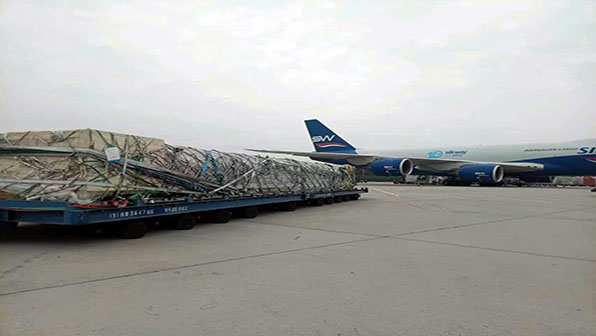What is Sea Freight?
Sea Freight, in the context of freight forwarding, refers to the transportation of goods from one port to another. It is a global means of transportation that connects countries and regions, and is characterized by its efficiency, economy, and safety. Ocean transportation can be divided into two forms: bulk cargo transportation(LCL) and container transportation(FCL).
What is a sea freight forwarder?
Sea freight forwarders are companies that provide ocean transportation services, logistics, shipping, and cargo handling for their clients. Usually, ocean freight forwarders work together with shipping lines, customs officials, and other relevant organizations to select the best mode of transport and route for their clients' cargo, ensuring that the goods are delivered smoothly from the origin to the destination.
The responsibilities of an Sea freight forwarder may include coordinating the transport and delivery of cargo, handling customs clearance and related documents, arranging cargo insurance, providing consulting services, and tracking and tracing of cargo. They need to be familiar with the regulations and requirements of domestic and international ocean freight transportation and have good organizational, communication, and coordination skills to ensure that clients' goods are transported safely, efficiently, and on time.
Should I choose FCL or LCL
If you need to transport a large amount of goods and the cargo is relatively regular, then container transportation may be more suitable for you. Due to the standardization of container specifications, goods can be well stacked inside the container, which can better protect the cargo, and it is also more convenient and efficient during loading and unloading. In addition, container transportation is usually safer and more reliable because containers can be sealed, locked, and tracked.
However, if the goods you need to transport are irregular or there is less quantity, then consolidated cargo shipping may be more appropriate. With consolidated cargo shipping, you only need to pay for a portion of the container cost, as you are using only a portion of the space within the container. In addition, you can choose containers of different sizes according to your needs.
What can ABL LOGISTICS do for me?
We can assist with transporting goods via sea freight, regardless of whether it is under EXW or FOB terms. We can collect the goods from the supplier's designated address according to the buyer's requirements, handle Chinese customs clearance and inspection of the goods, purchase cargo insurance for transport, reserve shipping containers, and ensure that the goods are loaded onto the ship smoothly. We will track the entire transportation process until the goods safely arrive at the destination port and delivery is completed.
Can ABL LOGISTICS provide door to door service?
Yes, we can provide door-to-door DDP/DDU services in most countries around the world where we have subsidiaries or partners. These countries include: USA, Canada, Slovakia, Hungary, Germany, Austria, Czech Republic, Croatia, Luxembourg, Slovenia, Netherlands, France, Poland, Bulgaria, Denmark, Estonia, Lithuania, Latvia, Monaco, Romania, Belgium, Italy, Finland, Ireland, Portugal, Greece, Sweden, Spain, Singapore, Malaysia, New Zealand, Thailand, Brunei, Philippines, Cambodia, Myanmar, Vietnam, Indonesia, Mexico, Venezuela, Costa Rica, Peru, Colombia, Panama, Saudi Arabia, Kuwait, Qatar, Bahrain, UAE Dubai, Oman, Iraq, Iran, South Korea, Japan, Nigeria, Ghana, South Africa, Kenya, Senegal, Cameroon, Democratic Republic of Congo, Kenya, Sudan, Pakistan, Russia, and India.
After sea freight arrives at the destination port, several procedures need to be completed.
Customs clearance: The goods must undergo customs clearance procedures upon arrival at the destination port. This process includes declaration, payment of taxes and fees, and inspections. Declaration form: A declaration form needs to be filled out after the goods have passed customs clearance. This is a document that declares the import/export situation of the goods, including information such as the name, quantity, value, and place of origin of the goods. Payment of fees: Upon arrival at the destination port, related fees, such as terminal handling charges, storage fees, and insurance fees, need to be paid. Delivery of goods: After the goods pass customs clearance, they need to be delivered. If you have entrusted a logistics company to handle this, they will arrange for the delivery of the goods. Receipt of goods: The final step is to receive the goods. When you receive the goods, please check carefully to ensure that the quantity and quality of the goods match the information on the shipping documents. If there are any problems, please contact the logistics company or supplier to resolve them in a timely manner.
How much cargo can Sea Freight?
The size of cargo that can be transported via ocean shipping depends on the size of the container, which is usually categorized according to ISO standards. Here are three common sizes of containers based on ISO standards:
Standard Container (20ft): Internal length of 5.89 meters, internal width of 2.35 meters, internal height of 2.39 meters, with a volume of 33.2 cubic meters. High-Cube Container (40ft): Internal length of 12.03 meters, internal width of 2.35 meters, internal height of 2.69 meters, with a volume of 76.0 cubic meters. Open-Top Container (40ft): Internal length of 12.03 meters, internal width of 2.35 meters, internal height of 2.39 meters, with a volume of 66.7 cubic meters.
Different types of containers can be selected based on the type of cargo being shipped. In addition, there are other types of containers available, such as open-top containers, flat rack containers, and refrigerated containers.
Can super long and large goods be transported by sea?
Some oversized cargo can be transported via sea freight, using specialized equipment such as open-top containers, flat rack containers, or roll-on/roll-off vessels. Please contact us to discuss your cargo transportation needs and we can provide you with a suitable shipping solution.
How to track cargo transportation information through a sea bill of lading?
A sea bill of lading is an important document in the ocean freight process, which records key information such as cargo details, origin and destination, and carrier information. By using the information on the sea bill of lading, it is possible to track the shipment status of the cargo. The specific steps are as follows:
- Obtain the bill of lading number, which is usually a series of numeric codes provided by the shipping company.
- Check the shipping company's official website: Enter the bill of lading number on the company's official website, and then check the real-time status of the cargo, including the departure time, arrival time, current location, estimated time of arrival, etc.
Top 10 ocean freight forwarding companies in China.
- COSCO SHIPPING
- China COSCO Shipping Corporation Limited
- China Merchants Group Limited
- China Shipping Group Co., Ltd.
- ABL LOGISTICS Limited company
- China Shipping Container Lines Co., Ltd.
- China Communications Construction Company Limited
- HNA Group Co., Ltd.
- Shanghai International Port (Group) Co., Ltd.
- Orient Overseas (International) Limited
How long does sea Freight generally take from China?
- Asian countries: 10-20 days
- Middle Eastern countries: 20-25 days
- North American countries: 15-40 days
- South American countries: 30-60 days
- Oceania: around 30 days
- African countries: 30-50 days
The actual shipping time may vary based on the specific origin and destination ports. Please feel free to contact us for more information.
The world's leading shipping company
Maersk Line
Mediterranean Shipping Company (MSC)
CMA CGM Group
COSCO Shipping Lines
Hapag-Lloyd
Evergreen Line
OOCL (Orient Overseas Container Line)
Yang Ming Marine Transport Corporation
PIL (Pacific International Lines)
ZIM Integrated Shipping Services
Hamburg Süd
ONE (Ocean Network Express)
Wan Hai Lines
SITC Container Lines
Hyundai Merchant Marine
Arkas Line
IRISL (Islamic Republic of Iran Shipping Lines)
Sinotrans
MOL (Mitsui O.S.K. Lines)
NileDutch
China's main maritime port for international trade.
Shanghai Port - SHPKG
Shenzhen Port - CNNSZ
Ningbo-Zhoushan Port - CNNGB
Qingdao Port - CNTAO
Guangzhou Port - CNCAN
Tianjin Port - CNTXG
Dalian Port - CNDLC
Xiamen Port - CNXMN
Lianyungang Port - CNLYG
Yingkou Port - CNYIK
The world's leading maritime port for international trade.
Singapore Port - SGSIN - Singapore
Rotterdam Port - NLRTM - Netherlands
Busan Port - KRPUS - South Korea
Port of Hong Kong - HKHKG - Hong Kong SAR, China
Antwerp Port - BEANR - Belgium
Jebel Ali Port - AEJEA - United Arab Emirates
Hamburg Port - DEHAM - Germany
Los Angeles Port - USLAX - United States
Tanjung Pelepas Port - MYTPP - Malaysia
Chennai Port - INMAA - India
Salalah Port - OMSSA - Oman
Colombo Port - LKCMB - Sri Lanka
Valencia Port - ESVLC - Spain
Santos Port - BRSSZ - Brazil
Jeddah Islamic Port - SAJED - Saudi Arabia
Gioia Tauro Port - ITGIT - Italy
Piraeus Port - GRPIR - Greece
New York/New Jersey Port - USNYC - United States
Laem Chabang Port - THLCH - Thailand
Barcelona Port - ESBCN - Spain
Hamad Port - QAHSR - Qatar
Felixstowe Port - GBFXT - United Kingdom
Genoa Port - ITGOA - Italy
Durban Port - ZADUR - South Africa
Bremen/Bremerhaven Port - DEBRM - Germany
Cochin Port - INCOK - India
Vancouver Port - CAVAL - Canada
Algeciras Port - ESALG - Spain
Gdansk Port - PLGDN - Poland
Houston Port - USHOU - United States













